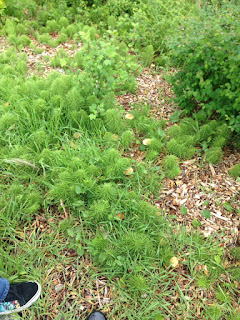Edmonds Marsh Fieldtrip
At the Edmonds Marsh, I found these brown mushrooms in the grass along the trail. As mushrooms are very difficult to identify, I wouldn’t recommend anyone taking my identification as truth. The only experience I’ve had was reading a book on Pacific Northwest fungi in middle school after all. That being said, the mushrooms have gills underneath their caps, meaning that it falls under the order “agaricales.” The mushrooms looked like they could have been Amanita Phalloides? These fungi were sitting in the grass, possibly sucking up any nutrients they could get from the ground. They seemed to be in their young adult stage, so they may be getting ready to release spores sometime in the next stage of their lives.
I think what was interesting to see was how at first glance, the marsh looks like it’s barely alive. But upon closer inspection, you can see fungi, plants, and animals all living in harmony. Of course, protists and bacteria as well, but you can’t really see those with the naked eye. The ecology is much more complex than originally thought of. I think learning about how the marsh functioned opened my eyes to the possibility of other ecosystems that we’ve never considered to be complicated and important to us. The benefits of a smelly marsh with birds and plants growing are much higher than anticipated, so that leads me to wonder how other places on Earth could be significant.
My question today would be… How do fish and other underwater animals see when the water is so murky? I remember barely being able to see into the marsh’s water from above. There are animals who live in even murkier water than this, so how do they get around?



Nice post Lynn... you always have interesting observations and questions!
ReplyDelete